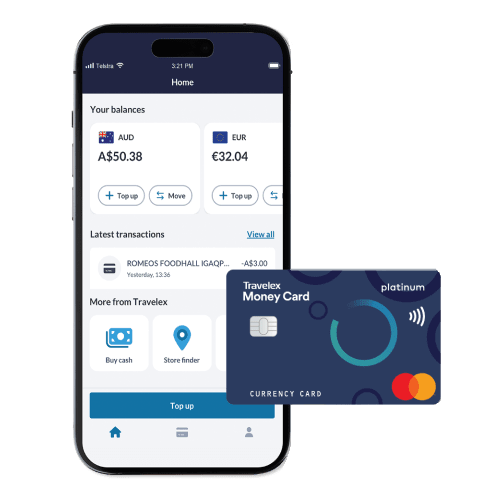The latest on NZD to EUR exchange rates
Looking to convert New Zealand dollars to euros?
If you're planning a trip to Europe, keeping an eye on the NZD to Euro exchange rate can help you get more from your New Zealand dollars.
Right now, 1 NZD =
Want even better value? Order euros online or load them onto your Travelex Money Card to access our best rates — fast, safe and secure.
Scroll down to view our live NZD to EUR chart, track historical rates, or discover what drives the New Zealand dollar to euro exchange rate — so you can convert your currency at the right time.
Tracking both NZD vs euro and euro vs NZD exchange rates can help you decide when to buy — especially if you're comparing rates or converting euros to NZD after a European holiday.
Swipe chart for latest date ->
Travelex Historical Rates for conversion of [FromCurrencyIso] to [ToCurrencyIso]: Last month
Travelex Historical Rates for conversion of [FromCurrencyIso] to [ToCurrencyIso]: 3 months
Travelex Historical Rates for conversion of [FromCurrencyIso] to [ToCurrencyIso]: 6 months
Travelex Historical Rates for conversion of [FromCurrencyIso] to [ToCurrencyIso]: 12 months
How to see Travelex historical rates
If you would like to see Travelex historical rates, please select one of the currencies
Top Currencies

Discover our travel card for Europe
Travel smarter with Travelex's award-winning Europe travel money card and enjoy the freedom to spend anywhere, any time.
- Withdraw cash with no international ATM fees1.
- Load, tap, and go wherever Mastercard is accepted worldwide.
- Top up your account on the go via the app or online.
- Save with no foreign exchange fees & real-time exchange rates.
- Manage multiple currencies effortlessly.
1. Travelex does not charge ATM fees, some operators may charge their own fee or set their own limits.












